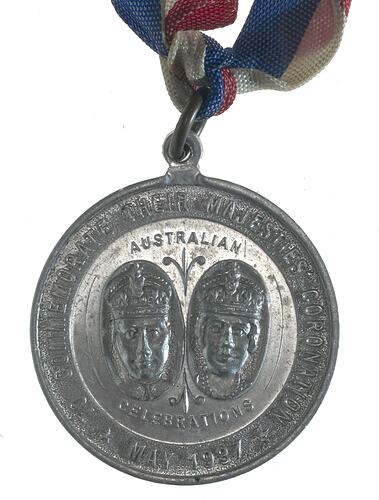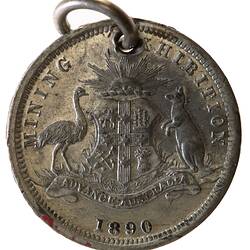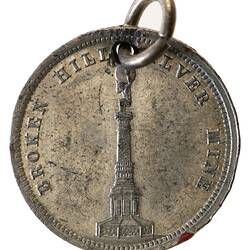In January 1885 a rich vein of silver at Broken Hill, discovered by a syndicate, turned out to be one of the world's largest known silver-lead-zinc lodes. The syndicate established the Broken Hill Proprietary Company (BHP) later that year. Other silver mining companies in the area included the Beltana Broken Hill Proprietary Silver Mining Company, incorporated in 1888, which purchased four mineral claims on the Ediacara field from the Broken Hill Miners Prospecting Syndicate.
During its early years, Broken Hill was a makeshift community of timber and corrugated iron buildings known for its mineral wealth - and also for its dust storms and poor living conditions. Vegetation around the town was destroyed for use in the mines and smelters, increasing the severity of natural dust storms, and smelters and mine plants belched noxious fumes and dust over the town. The shortage of fresh food and water led to the spread of disease.
The Municipality of Broken Hill was incorporated on September 22, 1888, just five years after the first mineral lease was pegged out and the year that a typhoid epidemic killed 128 people. The need for public health controls was one of the main driving forces behind incorporation. Three years later a private company finally constructed the Stephens Creek Reservoir and reticulation systems to the town and mines.
The City was divided into four wards: Burke, Wills, Sturt and King, each returning three aldermen. The ward system was later abandoned and Councillors are today elected to represent the whole of the City. The number of Councillors has remained at twelve, including a popularly-elected Mayor.
By 1891 the population had passed 21,000, making Broken Hill the third largest town in New South Wales. Civic progress continued during the 1890s with the construction of schools, a technical college, town hall, post offices and gaol. Many of the timber and iron hotels and business houses were rebuilt in brick and stone. Streets were paved and recreation reserves were planted with trees.
Broken Hill was declared a City in 1907.
Water supply problems were finally resolved in 1952 when a 109-km pipeline was built to channel water to Broken Hill from the Menindee Lakes.
BHP ceased work at Broken Hill in 1940. Today Pasminco is the only remaining operator, formed through a company merger in 1988.
The decline of the mining industry presents today significant challenges to the City.
The Broken Hill City Council issued a medal to commemorate the coronation of George VI in 1937 (NU 34750).
References:
Broken Hill City Council website http://brokenhill.local-e.nsw.gov.au/council/, accessed 17/10/2003.
Fairfax Walkabout website http://www.walkabout.com.au/locations/NSWBrokenHill.shtml, accessed 17/10/2003.
Silver mining in South Australia website http://www.southaustralianhistory.com.au/silver.htm, accessed 17/10/2003.
More Information
-
Keywords
-
Localities
-
Authors
-
Article types




